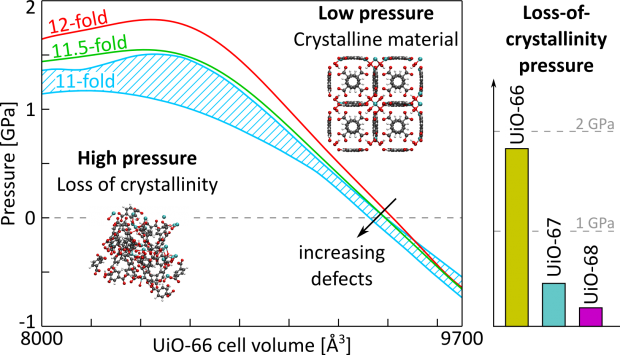A series of sulfonic acid functionalized mixed-linker DUT-4 analogues: synthesis, gas sorption properties and catalytic performance
Abstract
In this work, we present the successful synthesis of a series of sulfonic acid functionalized mixed-linker metal–organic frameworks (MOFs) having the DUT-4 topology by using different ratios of 2,6-naphthalenedicarboxylic acid (H2-NDC) and 4,8-disulfonaphthalene-2,6-dicarboxylic acid (H2-NDC-2SO3H) in one-pot reactions. The obtained materials were fully characterized and their CO2 adsorption properties at low and high pressures were studied and compared with those of the pristine DUT-4 material. Generally, the CO2 adsorption capacities range from 3.28 and 1.36 mmol g−1 for DUT-4 to 1.54 and 0.78 mmol g−1 for DUT-4-SO3H (50) up to 1 bar at 273 K and 303 K, respectively. Computational calculations corroborated the structural changes of the material in function of the loading of sulfonic acid groups. Furthermore, due to the strong Brønsted acid character, the resulting sulfonic acid based MOF material was evaluated as a catalyst for the ring opening of styrene oxide with methanol as a nucleophile under mild conditions, showing almost full conversion (99%) after 5 hours of reaction. A hot filtration experiment demonstrated that the catalysis occurred heterogeneously and the catalyst could be recovered and reused for multiple runs without significant loss in activity and crystallinity.


 Open Access version available at
Open Access version available at 